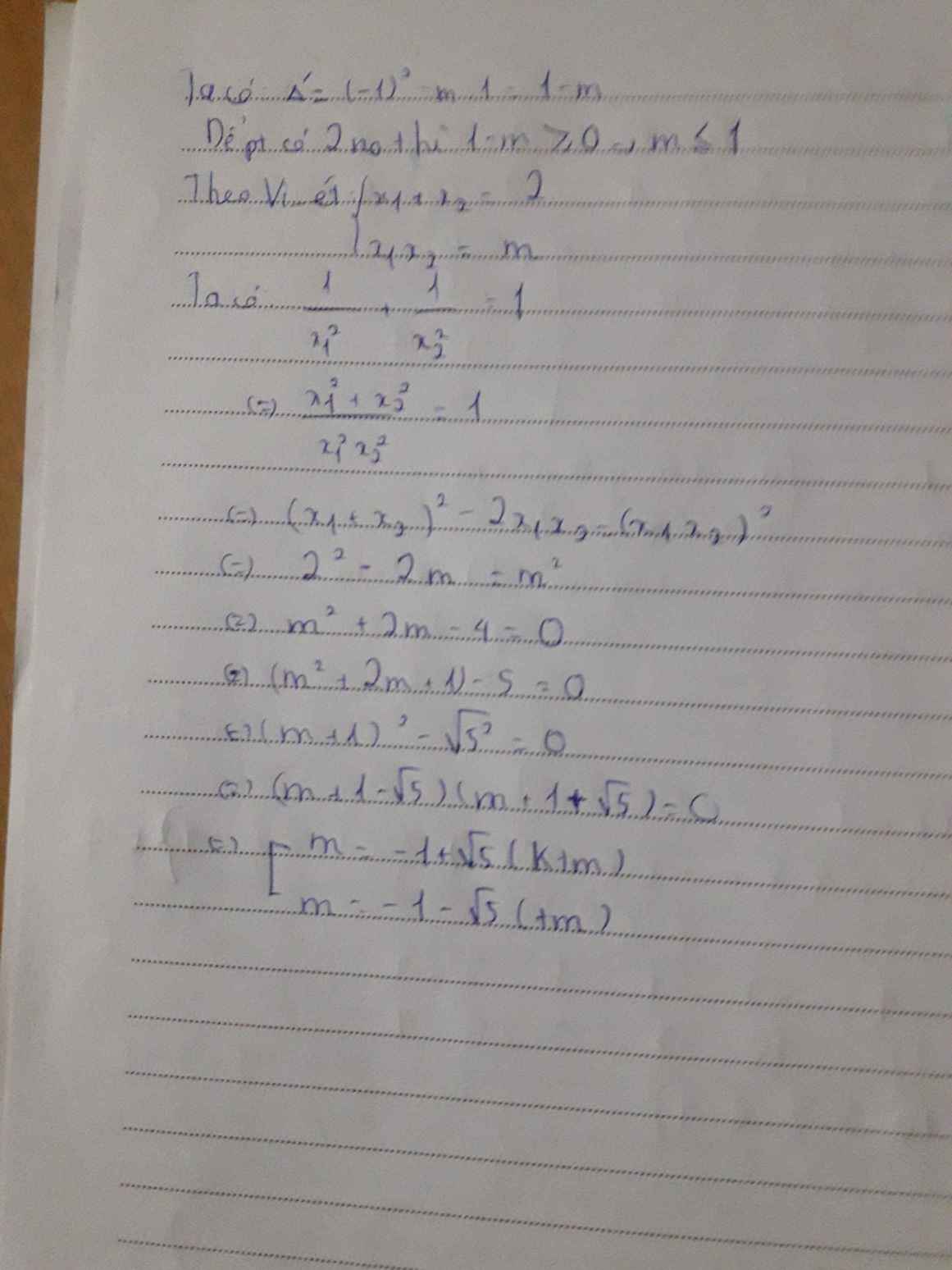Câu 1.Cho pt (m-3)x2-2(m+2)x+m+1=0 (1)
a, Tìm m để pt (1) có nghiệm.Tím nghiệm x2 biết x1=2
b,Tìm m để pt (1)có 2 nghiệm x1,x2 thỏa mãn \(\dfrac{1}{x_1}+\dfrac{1}{x_2}=10\)
Câu 2.Cho pt (m-2)x2+2(m+1)x+m-1=0
a, Tìm m để pt có 2 nghiệm cùng dấu
b, Tìm m để pt có 2 nghiệm x1,x thỏa mãn x13+x23=64
Câu 3.Tìm m để pt
2x2+2(2m+1)x+2m2+m-1=0 có 2 nghiệm x1, x2 sao cho \(\dfrac{x_1^2}{x_2^2}+\dfrac{x^2_2}{x^2_1}>7\)






























